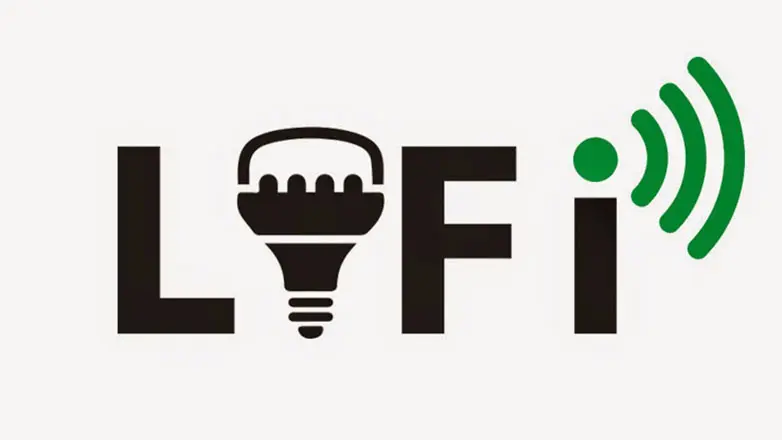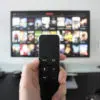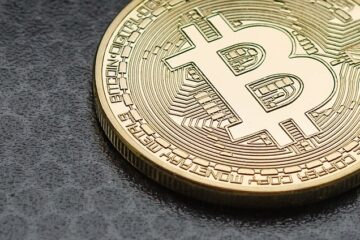Connectivity is one of the biggest boons of modern technology. The various ways of connecting to the Internet have made it possible to remain connected around the clock, regardless of the location. Whether you are at home in front of the PC or at the airport on your smartphone, there is one technology that makes it easy to remain connected. It is WiFi.
Invented back in the 1990s, WiFi is used to transmit more than half of the world’s Internet connections today. Since the technology uses radio waves to transmit data, WiFi is available everywhere these days, from hotels to car parks to bus terminals.
Even the remotest places, which have trouble connecting to the Internet, can easily connect to WiFi. In fact, WiFi is so popular, that people mistake it for the Internet. People who travel a lot or want to save on Internet bills widely use public WiFi though this is dangerous this is another topic.
So imagine a world where connecting to the Internet was even easier. What if we could connect to the Internet using light bulbs at home?
Don’t laugh it off just yet. If all goes well, then the LED bulbs in your house could connect you to high-speed wireless Internet with no issues. The technology is called LiFi, and experts predict that it will replace WiFi in the future. Kind of like Transformers, Fast and Furious, Avengers, Jason Bourne, and Star Trek have given many people a reason to not watch Star Wars movies anymore (The Force Awakens was terrible as well) but this is another subject.
What is LiFi?
The idea of transmitting data through light bulbs has been brought to focus by Harald Haas, a professor of Haas, a professor of mobile communications at the University of Edinburgh, Scotland. Since 2015, he has been working on the technology of transmitting data with the help of LED light bulbs instead of radio waves.
Haas says that by 2025, there will be a radio spectrum crunch, thanks to a large portion of the world’s population using wireless Internet. In order to prevent this situation, LiFi could be used in place of WiFi.
Haas says that the available radio spectrum isn’t sufficient to handle all the data that is transmitted or will be transmitted. The radio spectrum has become crowded and slow because of heavy usage. With WiFi increasing in popularity by the day, the number of people using it will only grow bigger in the coming years, leading to slow and inefficient WiFi. That’s the reason why Haas decided to invent an alternative medium for transmitting data wirelessly.
The process of using a light source to transmit data may not be entirely new. In 1880, Alexander Graham Bell used a beam of sunlight to transmit sound using a solar-powered device called a photophone. Over the years, several scientists have toyed with the idea of using a light source to transmit data. But Haas made it a reality by using something that is available everywhere now – an LED light bulb.
How Does LiFi Work?
In simple words, LiFi is a high speed, two-directional and wireless communication system with the help of which we can use a light source for a completely different purpose other than illumination – connectivity. Not all LED bulbs will be able to transmit data, though.
Only LiFi-enabled LED light bulbs are capable of altering illumination levels so that when the bulb is switched on, not only does it generate light but also creates a wireless network in the room. This happens so fast that the naked eye cannot perceive it.
When Haas first start exploring alternative wireless systems for transmission of data, LED light bulbs were only starting to become popular because of more energy savings compared to traditional light bulbs.
Since LED bulbs have a built-in driver for control (which helps the light turn on, off, or dim in a fraction of a second), Haas figured that by coding data into the driver, the bulb could be used as a wireless data transmitter. Haas and his team of students started to experiment with LED light bulbs, going on to create a transmitter and receiver system with the light as well as a solar panel.
Benefits of LiFi
We are aware that light is several times faster than anything else. Therefore, when a light source is used to transmit data, it becomes unbelievably fast. The incredible speed is the most remarkable feature of LiFi. In LiFi experiments, scientists have been able to achieve speeds up to 224 gigabits per second. That is about as fast as bonuses are being handed out in America because of tax cuts!
While it takes a few minutes to an hour to download movies over WiFi, over 20 movies could be downloaded per second over LiFi. Haas credits the faster speed to the fact that LiFi is limited to a smaller area compared to radio signals, resulting in faster transmission.
There is another remarkable benefit of LiFi – security. WiFi has often been blamed for lack of security, bandwidth theft, and other network breaches. With LiFi, the network is more secure. LiFi is only restricted to the area where the light is glowing, so there is no way your neighbors can steal your bandwidth if your curtains are drawn or windows closed.
LiFi cannot pass through walls, so only you and the people directly in the space where the light bulb is glowing will be able to access the network. Secondly, data can be transmitted even when the lights are dimmed. Haas has plans to take LiFi to even the remotest of places where the Internet is mostly inaccessible. With a simple Lifi-enabled LED bulb, the Internet can be accessed anywhere as long as you don’t walk on the other side of a wall!
Haas has also started to manufacture LiFi routers (which are only available for a selected clientele now), which can be used to connect any smart device to an LED light bulb. Haas hopes that over the next several years, the routers will make their way into households and make LiFi a reality.
Uses of LiFi
LiFi has a lot of practical uses. One of them is used in the military. WiFi works over a long-range and needs frequent wiring, but LiFi can work in dense areas and can be restricted to a small area with a light source. By limiting the light source, access to sensitive information can be also be restricted. All these make LiFi perfect for use in the military.
Another use of LiFi is in limiting children’s access to the Internet. Usually, parents have a lot of worries about children’s unrestricted access to the Internet and their addiction to smartphones and computers. With LiFi, turning off access to the Internet becomes very easy. Just turn off the light source, and the Internet connection also turns off.
LiFi also has uses in traffic and transportation. For instance, the LED bulbs in traffic lights can be used to give traffic and weather updates to drivers while they wait at a red light. LiFi also has several uses underwater, something WiFi can never achieve because radio waves don’t travel underwater.
But light can travel through water. LiFi has been used for several underwater purposes. Underwater vehicles such as submarines can communicate using light, and become more effective at what they do.
Local Internet access becomes easier with LiFi. Street lights with LiFi capability could become hotspots, similar to WiFi hotspots. People walking down the street could easily access the Internet on their phones, making night-time traveling safer and also providing local information about a region to tourists. Advertising, smart gadgets, and augmented reality are some of the other uses of LiFi.
Downsides to LiFi
In theory it may sound a brilliant idea, but LiFi comes with its own limitations. One of the biggest limitations is that LED bulbs aren’t the only source of light. Other forms of lighting, along with natural light, form a great interruption to network connectivity.
Places without LED bulbs will not be able to offer LiFi. While WiFi enables users to connect to the Internet both indoors and outdoors, Li-Fi will only work indoors in the presence of an LED light source.
LiFi does not pass through walls, so a single router is not going to work for the whole house. This makes it more expensive since you would have to purchase separate routers for every room. Besides, LiFi only works in the line-of-sight. This means, if you cover the sensor on your device or block the source of light, you lose your Internet connection. The cost of constantly glowing LED lights also needs to be considered.
Even though LED bulbs consume less electricity, it will still be expensive and inconvenient for someone who needs to use the Internet at all times. Though not necessary since most people don’t work in the dark. Interference with other light forms will result in a poor network and less than ideal speed.
WiFi is more versatile than LiFi in a lot of ways. For instance, WiFi is backward compatible. Even if you have an old computer, you can easily connect to a WiFi router to access high-speed Internet. No matter how old your device, the latest WiFi router will still work with it. If LiFi becomes a reality, it will need the latest devices to be able to connect to a router. That old computer you bought back in 2000 may not be compatible with that new kind of router.
Another reason why it may not replace WiFi, at least not everywhere, is that the latter enables multiple devices to connect at the same time. If you have four computers and five smartphones at home, all of them can connect to the same router and use WiFi. However, LiFi can only support a single device as long as it is close to the light source. If the light does not reach where you are located, you cannot connect to the Internet.
Despite its useful features, it’s going to take a while for LiFi to become as rampant as WiFi. New technology always takes time to settle in. WiFi has existed for years now, and people are comfortable using it.
The same cannot be said about LiFi because the technology is still being studied and there are downsides that need to be sorted out. Even if LiFi routers become available for the masses, people will still lean towards WiFi because it is more convenient, is more easily available, and doesn’t have many of the downsides of LiFi.
But nonetheless there is still many advantages to LiFi.
LiFi has so far only been used for scientific and academic purposes, things that are rarely ever used in everyday life. It has a very short range, and constantly needs a light source (which most to all desks have though). When a person is traveling and does not have a LiFi enabled light source nearby, it will not be possible to connect to the Internet. Despite the fast speeds and the few benefits, LiFi isn’t likely to replace WiFi in the near future.
The use of the two together can prove to be beneficial, but alone, LiFi isn’t capable of producing results as brilliant as the studies suggest. Until the downsides of LiFi have been dealt with, WiFi will continue to be popular and critical to maintaining our quality of life and the so-called spectrum crunch will fail to have any effect on the use of this wireless technology.
This is a guest contribution by James Agar, a self-confessed ‘Tech Geek’ and the chief editor at DontBreakThe.net, a Technology website dedicated to providing easy-to-digest information and How-To Guides to make the tech world a better place.
[image source: youtube.com]














